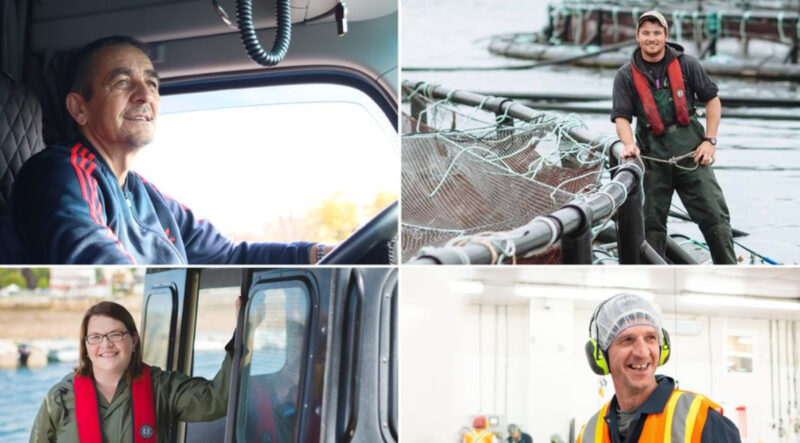Nova Scotia seeks public input on aquaculture expansion
Strong support continues for salmon farmers and the aquaculture industry as a whole in Atlantic Canada
By Fabian Dawson
SeaWestNews
Nova Scotia, Canada’s top seafood exporting province, has launched a public consultation process to get feedback as it looks to expand salmon farming operations.
The public consultation process, involving an opinion survey, will seek feedback from Nova Scotians until September 6.
“Since December, we’ve met with community stakeholders, industry representatives and public sector partners to understand their perspectives and hear their thoughts on how we could improve our aquaculture regulations. And now, we want to hear from Nova Scotians,” said Steve Craig, Minister of Fisheries and Aquaculture.
“You don’t need to be an expert to be part of this process. If you live in this province and have an interest in its future, we’d love to hear from you,” he said in a statement.
Aquaculture goes back more than a hundred years in Nova Scotia, where nearly 30 per cent of all Canadian seafood exports come from.
There are 235 aquaculture sites, both marine and land-based, found all around the province. Seafood grown and harvested in Nova Scotia is sold to customers all over the world, including the United States, China, and Europe. Today, the aquaculture industry is worth approximately $90 million per year and employs nearly 900 people – mostly in rural areas at farms and hatcheries.
The current aquaculture regulations, developed following an 18-month independent review, have been in place since 2015.
“A commitment to continuous improvement means taking the time to reflect on our priorities, learn from lived experience, listen to differing viewpoints, and understand what’s most important to the people in our communities,” said Membertou First Nation Chief Terrance Paul, Co-Chair of the Nova Scotia Aquaculture Regulatory Advisory Committee.
“This is the right time to step back and do that with our aquaculture regulations. If there are opportunities to improve on the framework in place today, this review will help us identify them,” he said.
Earlier this year, public opinion polling conducted for the Aquaculture Association of Nova Scotia (AANS) suggested that Nova Scotians consider aquaculture as a sector that positively impacts the economy, employment, and sustainability of a local food source.
There is strong support for the provincial government to help the aquaculture industry grow, reflecting the importance Nova Scotians place on the industry, said AANS.
Another poll found 81 per cent of Atlantic Canadians support aquaculture and agree that local salmon farming is a reliable and sustainable source of protein.
The survey, by the Atlantic Canada Fish Farmers’ Association, also found 87 per cent of Atlantic Canadians agree sustainable aquaculture helps to ensure food security in our region.
The public consultation process in Nova Scotia, comes in the wake of the Federal Government announcing an engagement plan in British Columbia to transition away from open-net salmon farming on Canada’s west coast.
The phased engagement approach which will invite First Nations, the aquaculture sector, B.C. communities, academia, and conservation organizations to provide feedback as to what should be included in an open-net pen transition plan.
The input and feedback received during these engagement sessions will be instrumental in the development and implementation of the open-net pen transition plan, expected to be finalized in the Spring of 2023.
Ottawa has acknowledged First Nations’ rights to define their relationships with the aquaculture industry and has placed indigenous interests and reconciliation at the centre of its plan for BC.
It follows several court decisions and a range of scientific studies that found open-net salmon farming in B.C. and neighbouring waters pose no more than a minimal risk to wild salmon.
(Image courtesy of Cooke Seafood shows aquaculture workers in Atlantic Canada)

